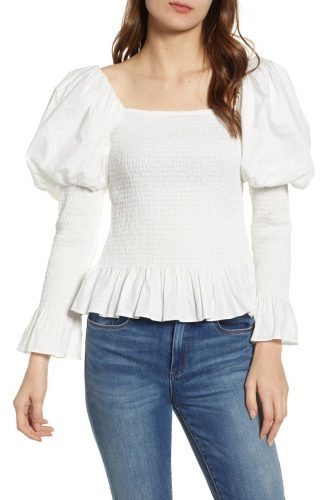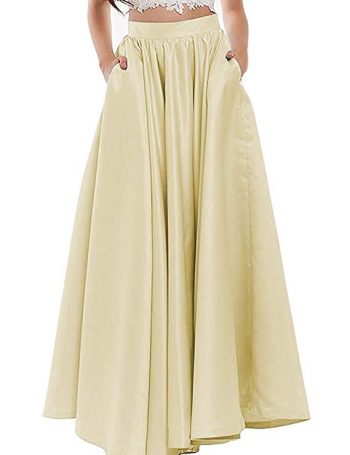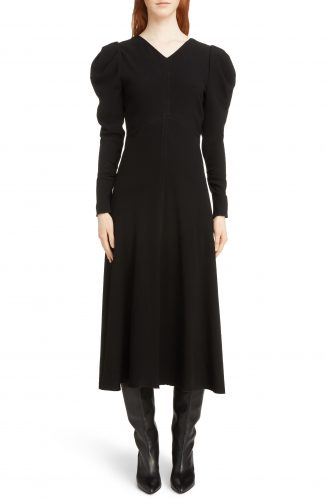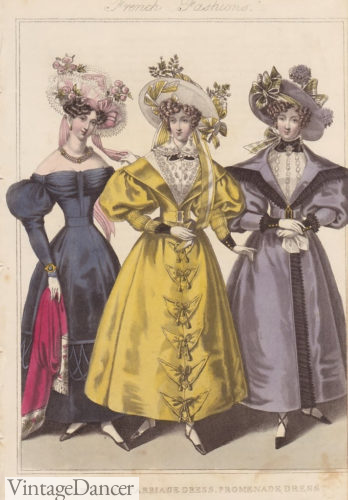
1830s dresses and hats – dinner dress (L), carriage dress (M) and promenade dress (R)
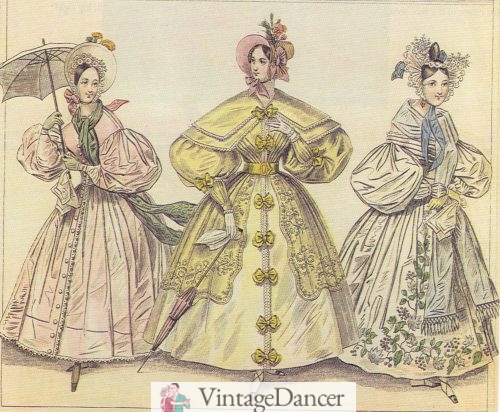
1830s summer dresses and hats
How to DIY a 1830s dress:
Option 1. Costume rental.
Option 2. The 1980s
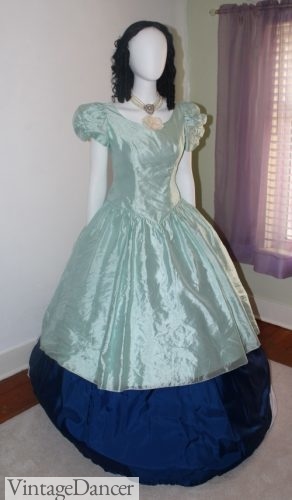
A short teal 80s prom dress over a blue circle skirt. Voila! Victorian ball gown
Option 3. Modern Dresses
- This puff sleeve top paired with a full skirt –>
- A basic full skirt like this plus a puffy sleeve top or dress
- A puffy sleeve dress like this is close enough for a simple 1830s costume
Option 4. Pick another decade
Debbie Sessions has been teaching fashion history and helping people dress for vintage themed events since 2009. She has turned a hobby into VintageDancer.com with hundreds of well researched articles and hand picked links to vintage inspired clothing online. She aims to make dressing accurately (or not) an affordable option for all. Oh, and she dances too.
